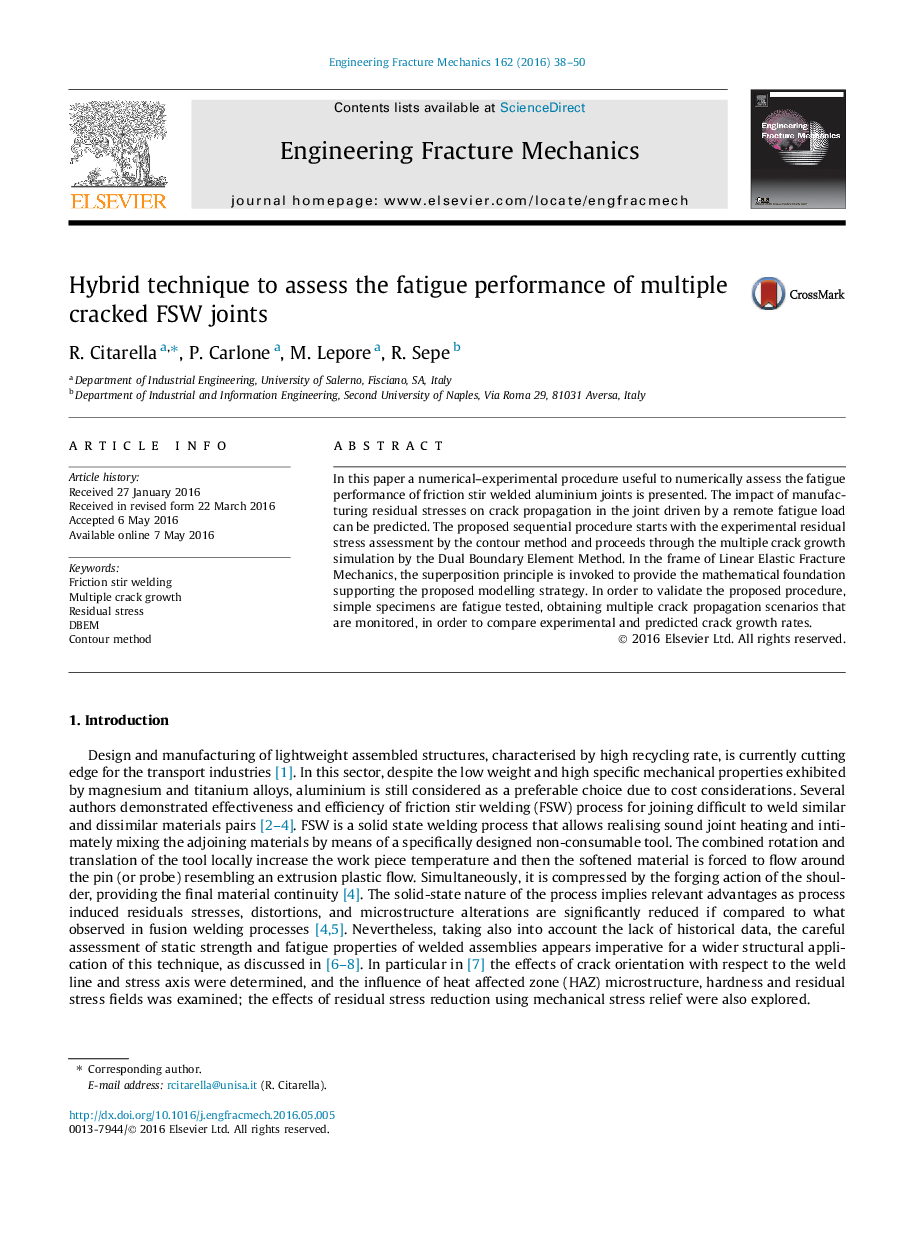| Article ID | Journal | Published Year | Pages | File Type |
|---|---|---|---|---|
| 770376 | Engineering Fracture Mechanics | 2016 | 13 Pages |
•The FEM–DBEM approach proved to be able to predict multiple crack growth in presence of residual stresses.•The crack starts from the weld line and the process induced opening stresses play an accelerating effect on the crack propagation.•The numerical results are in good according with experimental measurement.•The presence of residual stresses influences the crack propagation.
In this paper a numerical–experimental procedure useful to numerically assess the fatigue performance of friction stir welded aluminium joints is presented. The impact of manufacturing residual stresses on crack propagation in the joint driven by a remote fatigue load can be predicted. The proposed sequential procedure starts with the experimental residual stress assessment by the contour method and proceeds through the multiple crack growth simulation by the Dual Boundary Element Method. In the frame of Linear Elastic Fracture Mechanics, the superposition principle is invoked to provide the mathematical foundation supporting the proposed modelling strategy. In order to validate the proposed procedure, simple specimens are fatigue tested, obtaining multiple crack propagation scenarios that are monitored, in order to compare experimental and predicted crack growth rates.
